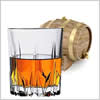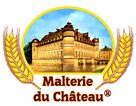Votre panier

 India: India overtakes France to become world’s largest buyer of whisky by volume
India: India overtakes France to become world’s largest buyer of whisky by volume
Although alcohol is forbidden by most major Indian religions, and banned in Gujarat, India has long loved the Scottish drink.
Indian whisky consumption has exploded by more than 200 per cent in the past decade, with India overtaking France this year to become the world's largest buyer of whisky by volume, guzzling over half the world's whisky – a staggering 1.5 billion litres, ABC News reported on May 11.
In fact, Indian whisky drinkers often enjoy the fabled Patiala peg, named after the larger-than-life Maharajah of Patiala, Bhupinder Singh. At four fingers, it's around four standard measures or 120 millilitres.
Despite traditional disapproval, many young urban Indians are enjoying a drink and drinking culture. Graphic designer Rukminee Guha Thakurta is one of millions of young professionals, who now enjoys a drink.
"It's quite trendy to drink," Ms Thakurta said. "The economy has opened up, the markets have opened up, and there are some new brands available, and people are really enjoying this [drinking] culture."
According to the founder of Hemanth Rao, Bangalore's Single Malt Amateurs' Club, a society devoted to single malt whisky appreciation, given how large and diverse India is, attitudes to drinking are equally varied.
"Compared to rural areas, the urban areas have evolved much quicker in the way that they're perceiving alcohol consumption. There's a lot more maturity and acceptance today in the society about consuming alcohol, including women," he said.
Ms Thakurta agreed. She said while India's drinking culture was strictly male, her father also allowed her to taste different drinks, and when a friend's family took her in when she first moved to Bangalore as a student, just as the city's renowned pub culture was starting to emerge in the early 2000s, "in the evenings I would come back from work and Jose Uncle would pour me a whisky," she recalled fondly.
She added, "though my mother doesn't like that I drink, she's respectful of my choices."
While Scotch was a mainstay of the British club, Indians didn't initially warm to the drink, preferring local, indigenous liquor, also known as desi deru, such as toddy or arak, or bhang (cannabis). In 1894, the British Hemp and Drugs Commission released a report claiming that Scotch was safer than desi deru or cannabis.
Soon, the Westernised Indian elite started drinking whisky too. Whisky was glamorised as prestigious, modern and sophisticated – especially in Bollywood movies.
While drinkers had previously been depicted as evil or tragic (such as Devdas, which tells the story of a young man who succumbs to alcoholism, which, has been filmed 25 times, is the most adapted Indian film ever), from the 1970s, drinking whisky was portrayed as stylish and macho.
A 2020 study by the Indian Journal of Psychiatry of Bollywood films from 1960 to 2010 found that films from 2001 had the most scenes featuring stars enjoying Scotch in clubs and bars, including women, concluding that films made from 2001: "had the most proportion of scenes set in clubs, bars, discotheques, or restaurants; scenes with characters of "positive" shade depicting alcohol use, and the scenes portraying heroines with alcohol use. There is an increasing trend toward alcohol depiction by positive characters for fun and relaxation."
But although many Indian whiskies like Bagpiper, Royal Stag, 100 Pipers, Peter Scot or McDowells may sound Scottish, they're actually "Indian-made foreign liquor" – local spirits usually made from molasses, sometimes blended with actual Scotch, and bottled in India to overcome massive 150 per cent tariffs on imported liquor.
But with India now the world's top out-bound travel market, with more than 50 million Indians travelling for work and pleasure, they're picking up their own Scotch, increasing consumption accordingly, and according to Mr Rao, more and more are interested in prestige single malt varieties and brands.
Although India is Scotch's second biggest export market in value after the United States, it's only two per cent of the total Indian market, despite tripling in value over the decade to 2019, and increasing by 60 per cent from 2021 to 2022.
Since Brexit, the British government, which hasn't had much luck since it left the European Union, has been trying to negotiate a new free trade agreement with India – whose economy just overtook its former coloniser's – especially to increase Scotch's market share, arguing a reduction in tariffs could triple Scotch's market share, bringing a potential 340 billion rupees ($6.29 billion) increase in tax revenue.
However, a new wave of premium Indian single malts appealing to Indian palates is gaining popularity with younger drinkers who don't have the same colonial preconceptions Indians once did that imported brands are better than Indian ones.
"I've tried some Indian single malts," said Guha Thakurta. "I'm not a connoisseur, so I can't tell you exactly why I like them or how to compare them with Scotch but I have to say that I like the Indian single malts more than, say, Japanese single malts."
It might be that Indian single malt whiskies appeal more to the Indian palate. According to UK law, Scotch whisky must be made with malted grains such as malt or barley. Although India produces around 40 per cent of the world's rice, historically, it never produced much wheat or barley, though it's now among the world's top producers for both.
But as Mr Rao noted, "because of the [higher protein] six-row barley used in Indian single malts, they've got more of a bold presence, and on some fronts, are better than Scottish single malts. There's more oomph in Indian single malt whiskies."
But while Indian single malts might compete on flavour, Indian whisky manufacturers are concerned at what effect the removal of tariffs may have on the fledgling Indian single malt industry.
"We're not against the free trade agreements," executive director of peak industry body the Confederation of Indian Alcoholic Beverage Corporations (CIABC) Vinod Giri said. "All we say is the free trade agreement should be fair and equitable to both sides." He and the CIABC are calling for a gradual reduction over the next decade or decade and a half.
As a consumer, Mr Rao is "gung ho" for it. "I mean, I can't imagine as to what kind of acceleration the Indian market will have when there are many more variants, many more available brands in India."
But on the other hand, he conceded, "if Scotch only comprises two per cent of the total Indian whisky market, why would the Indian whiskey industry want to reduce those taxes and lose 98 per cent market share? It just doesn't make sense."
It's not the only sticking point. Due to a much warmer climate, Indian whiskies mature three and a half times faster than Scotch whiskies. The same UK criteria say that whisky must be matured in a wooden cask for at least three years. But as Mr Giri points out, Indian conditions mean that alcohol also evaporates much faster than cool, damp Scotland, at around 10 per cent per year.
"That means in three years, a third of your whisky has evaporated, raising your costs by that much as well. So we say that, in all fairness, put the maturation rules on the basis of what how much time the whisky should be matured in India to achieve the same level of effect on the product," Mr Giri said.
Although this bottleneck in negotiations may scotch any reductions in price for Indian drinkers for now, the rise of Indian single malt promises more choice for whisky connoisseurs around the world.
Revenir
E-malt.com, the global information source for the brewing and malting industry professionals. The bi-weekly E-malt.com Newsletters feature latest industry news, statistics in graphs and tables, world barley and malt prices, and other relevant information. Click here to get full access to E-malt.com. If you are a Castle Malting client, you can get free access to E-malt.com website and publications. Contact us for more information at marketing@castlemalting.com .





